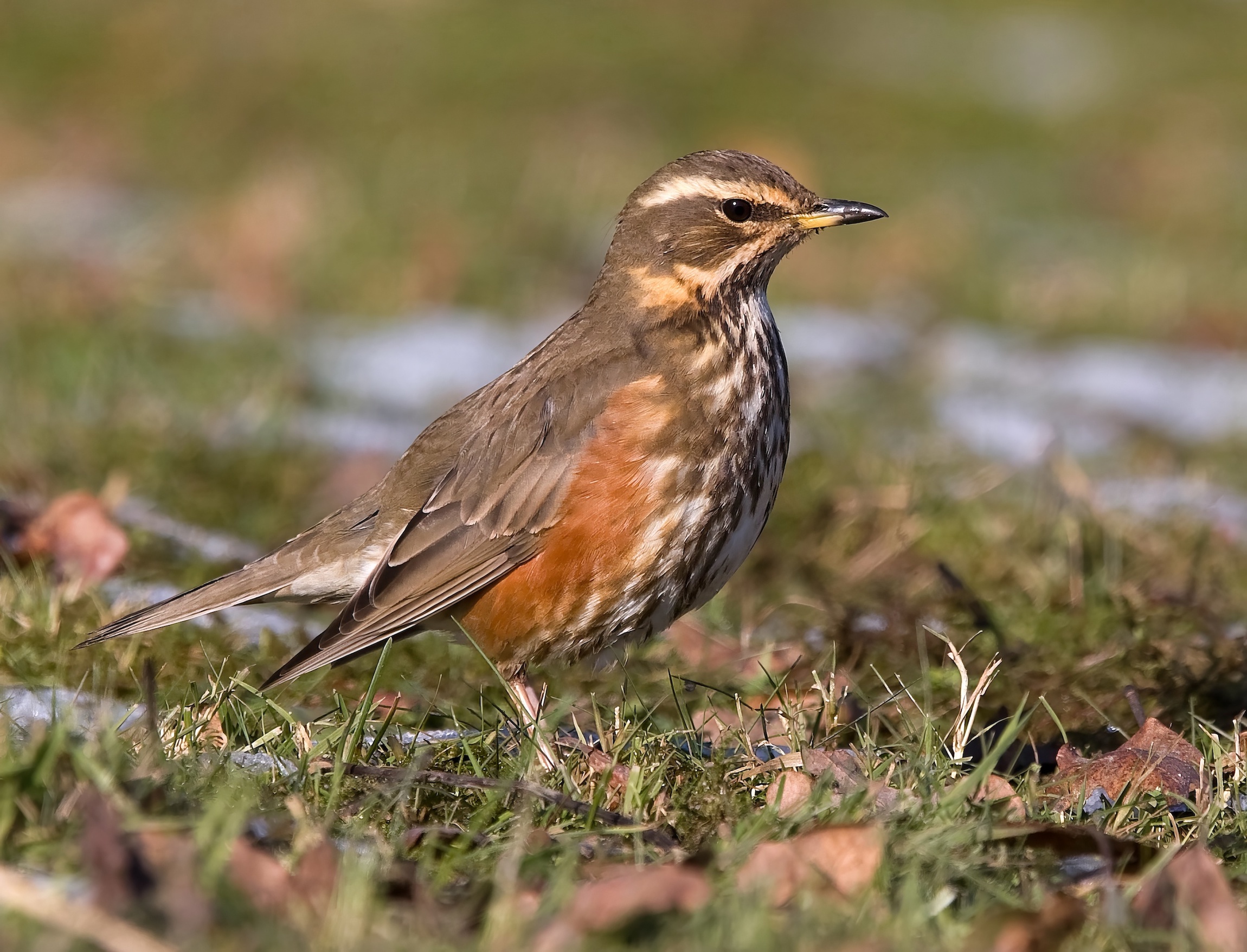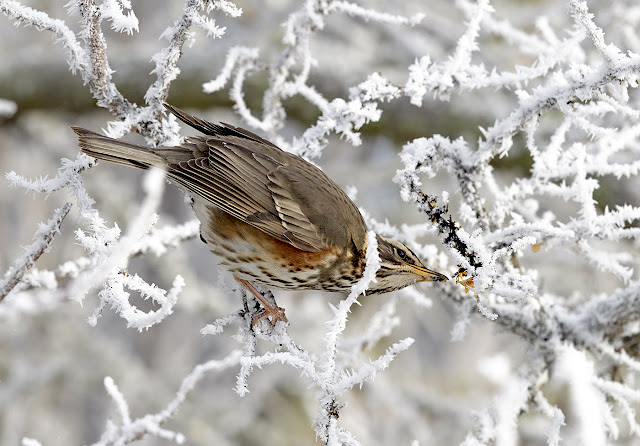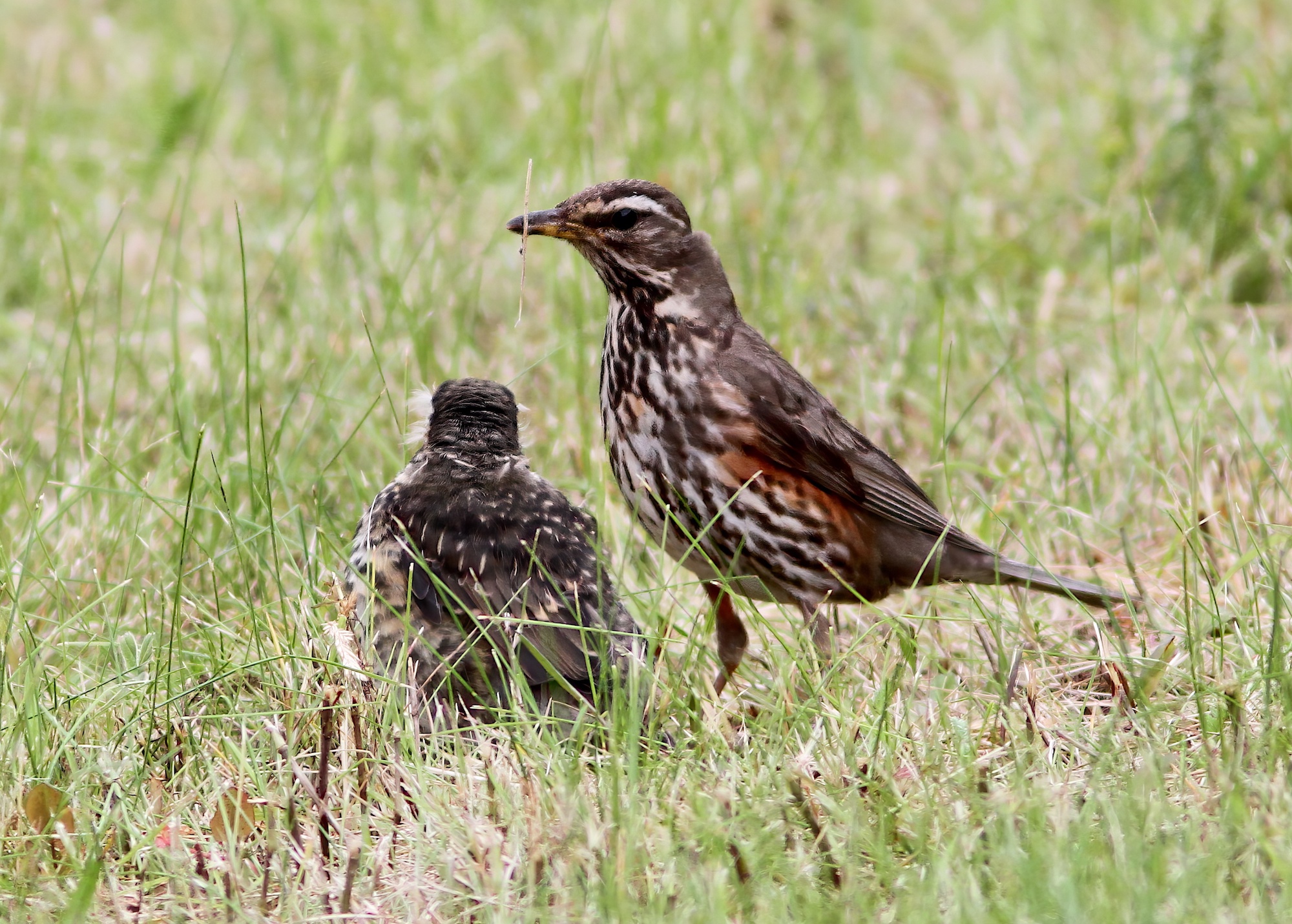Redwing Turdus iliacus
Nominate Scandinavian and Russian form a very common passage migrant and winter visitor, mainly September-April, rare in summer. Icelandic form coburni rare but probably under-recorded.



A pasture full of several hundred worm-seeking Redwing and Fieldfare, T. pilaris, is a great sight of late winter. They tend not to move onto pasture until the last berries have gone from the hedgerows. Most pass through and winter further west. Over 99.5% of our birds come from Scandinavia and further east but Gregory in two notes in LBR 2018 showed that we get a regular trickle of Icelandic birds of the coburni race, (which can only be reliably identified on the measured wing length of trapped birds, or formerly shot ones, see photo, above) and peak flock size varies dramatically from year to year at Gibraltar Point. Using the long-term dataset collected by Gibraltar Point Observatory from 1949 to 2018 Gregory showed the mean highest annual flock size was 1,371with a spike up to 8,640 in October 2012, the highest one-day count there in nearly 70 years. He found a mean annual increase in flock size of 50 birds per year over the period. LBR reports over the five years to 2018 showed the largest annual flock size across the county ranged from 1,180 in 2016 to 8,000 at Crook Bank, Saltfleetby-Theddlethorpe Dunes NNR on October 19th, 2014. The largest numbers presumably depend on exactly where migrating birds touchdown on the coast on arrival. And someone being there to count them!
The BTO ringing data shows that birds ringed abroad mainly come from Scandinavia, as expected. There have been a few from Poland and The Netherlands, and at least one from Iceland which was ringed there as an adult in September 2016 and retrapped at Gibraltar Point October 30th and November 1st 2016. Birds caught and ringed in Lincolnshire have been recovered in a wide variety of countries including Georgia, Italy, Norway, Poland, Russia, Spain, and Turkey.
Reference
Gregory, G., Wilson, K. M. W. and Blackburn, A. (2018). A Preliminary Phenological Analysis of Ten Species or Subspecies of Wintering Birds at Gibraltar Point National Nature Reserve from the Winter of 1949/50 to the Winter of 2017/18. Lincolnshire Bird Report 2018: 205-210.
(Account as per new Birds of Lincolnshire (2021), included December 2022)
